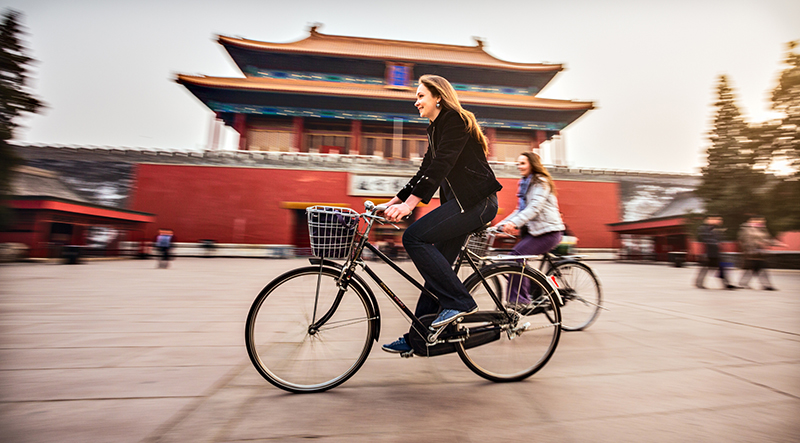By Jerry Wu, manager of the Polar Capital China Stars fund
The China bear story has been well documented by now. A troubled property market, problematic and high local government debt, collapsing birth rates, and demographic challenges all led to low business and market confidence, and significantly derated China assets.
Looking at the asset prices, it is hard not to wonder whether the China growth story has ended. However, after having just spent three weeks in a dozen cities, from the glitzy Shanghai to the sleepy backwater town of Fanchang that has just welcomed its first Starbucks, it is clear that the China growth story is not ending, but changing.
Rise of the Chinese multinationals
Internationalisation is the buzzword in corporate China. For some, it is a reactive and defensive move in response to the impact of rising geopolitical tensions in global supply chains, inadequate domestic demand and, thus, excess capacity.
However, for some aspiring entrepreneurs and companies, internationalisation is a natural evolution from domestic dominance to global prominence.
Export and global growth are not new, nor are they the same as that of yesteryear when iPhones and Nike shoes were made with cheap and efficient labour. This new phase of internationalisation is different – it is the export of expertise, technology, innovation, and brands. From ‘made in China’ to ‘branded and marketed by China’, we will see the rise of Chinese multinationals.
Chinese EVs are coming to a place near you
Commenting on its Chinese competitors during his company’s most recent earnings call, Tesla CEO Elon Musk said: “If there are no trade barriers established, they will pretty much demolish most other car companies in the world. They’re extremely good.”
In fact, it is already happening. With its technology, scale and leadership in the production of electric vehicles (EVs) and a more successful go-to-market strategy, China’s car exports overtook Germany and Japan in extraordinary fashion in just two years.
See also: Why European stocks could benefit most from revived risk appetite
A substantial part of this success is rooted in their competitiveness and popularity in other emerging markets. In an increasingly multipolar world, this trend of rising Chinese multinational brands in the global south is very likely to continue. While it will take more time and effort to win the hearts and wallets of richer and pickier European consumers, Chinese car makers have a compelling value proposition for a world fast transitioning towards EVs. The winning formula of better and cheaper will prevail.
However, it is not just about selling cars globally – Chinese brands are also making their supply chains international, bringing their best partners with them.
Hongfa, the world’s largest relay manufacturer with a dominant market share in high voltage DC relays for EVs, is constructing its first European production site in Germany after building a thriving Indonesia production base servicing its global clients . Developing local supply chains in Europe is also necessary and critical to managing rising trade barriers and tension.
Your margin is my opportunity – should Amazon be afraid?
While it will take time for Chinese EVs to conquer Western consumers, Chinese digital consumer platforms are already making significant inroads. Temu, Pinduoduo’s international e-commerce superstore, and Shein, a global e-commerce fashion retailer, are both able to boast more than 150 million monthly active international users and $30-$40bn annualised gross transaction sales. Both are already very popular with US and European consumers, especially younger digital natives.
Temu sells the same products as Amazon at discounts of 30-40%, with many consumers willing to trade convenience and wait the two week delivery period, especially given the current cost of living crisis. Amazon even reduced its seller fee last year in an attempt to compete against these fast growing new entrants.
The ubiquitous three and the convergence of two Chinas
What struck us most when visiting many small towns in China is the ‘ubiquitous three’ – a name given to three companies that seem to be everywhere throughout the country.
Luckin Coffee brings tolerable $1.50 per cup coffee to the masses; Tastien Chinese Burger localises Western fast food at lower price points; Mixue peddles sub-$1 fruity and creamy tea drinks on an industrial scale. Looking at the ubiquitous three, it is hard to reconcile them with the narrative of weak consumption.
The answer lies in the convergence of two Chinas. There is the developed China with about 200 million middle-class consumers clustering around four megacities – the China that everyone was visiting and focusing on.
But in contrast, there is another emerging China characterised by wet markets, cheap knockoffs and unbranded consumer goods. Instead of the Shanghai middle class drinking more Starbucks or pricey artisanal coffee, the main consumption story now revolves around the other hundreds of millions of lower/middle-income families trying decent coffee and burgers for the first time – and often at more affordable prices.
China’s growth has slowed after decades of urbanisation and investment-led explosive growth, but it is far from over. Rather, the growth drivers are transitioning.
See also: Fundsmith Equity and Lindsell Train portfolio dropped from Bestinvest’s Best Funds list







